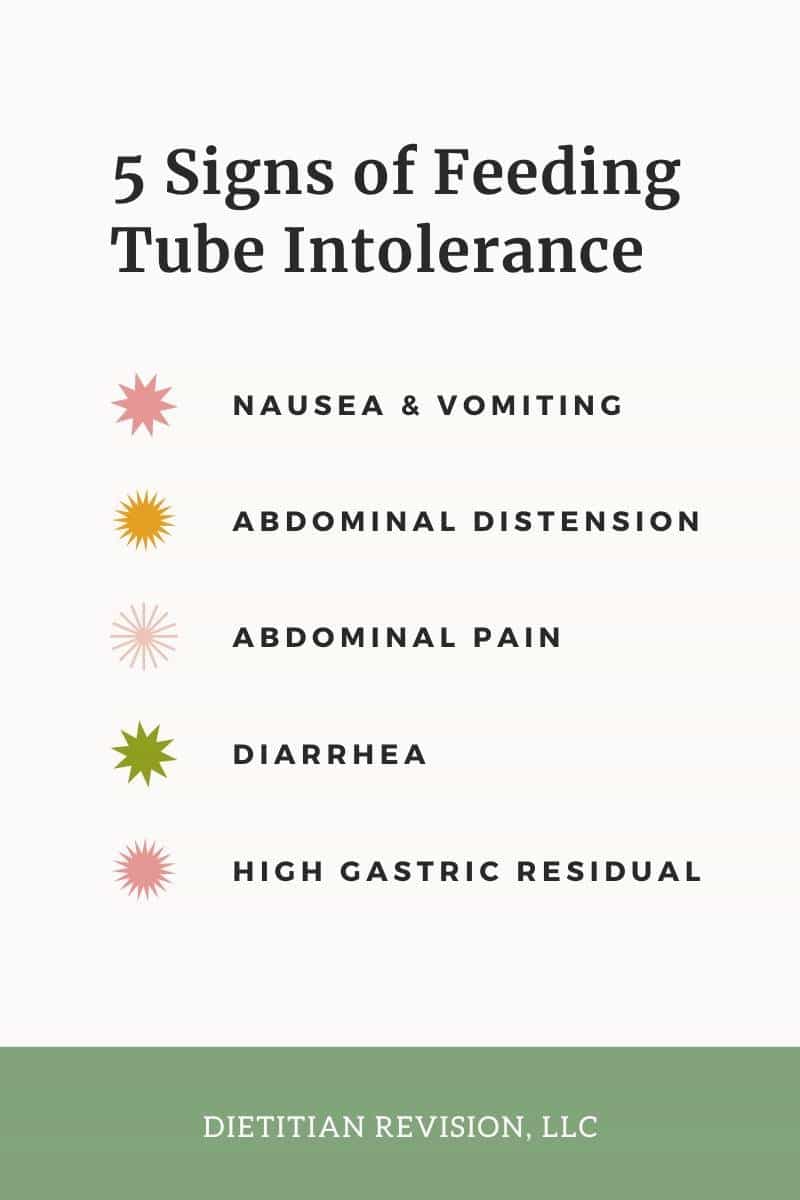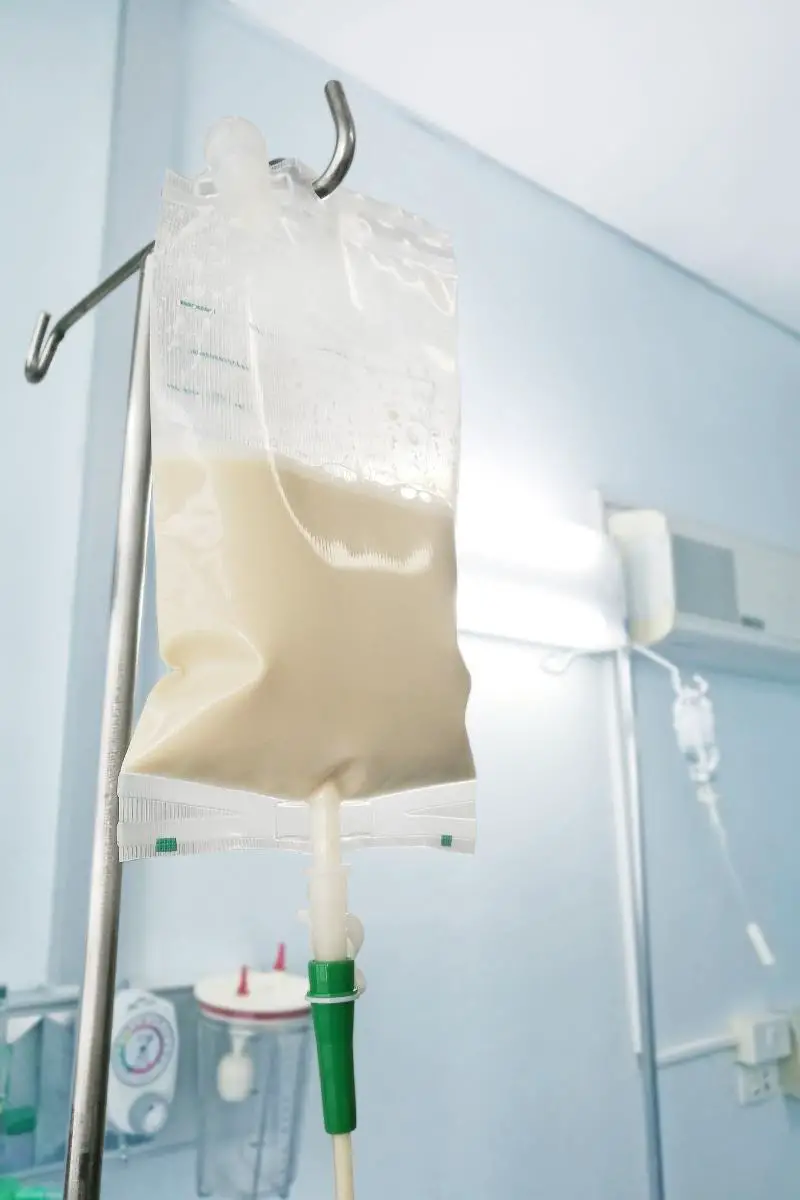Older adults may be fed through a feeding tube for a variety of eating issues. It is important that these individuals are monitored for signs and symptoms of tube feeding intolerance.
*This article contains affiliate links. I may earn a commission from qualifying purchases at no extra cost to you.
What is Tube Feeding?
Tube feeding is when nutrition is provided via a tube that leads right into the stomach or sometimes the small intestine.
This is a way to get proper nutrients into those who are unable to eat anything by mouth or just cannot get enough nutrition orally.
Who Needs Tube Feeding?
If swallowing trouble is present then a tube feeding may be necessary, since eating orally may be unsafe. This can occur after strokes and other neurological conditions.
Swallowing difficulty may also occur from degenerative, progressive conditions such as dementia or Parkinson’s disease. However there are pros and cons to consider regarding tube feedings when conditions are irreversible.
Head and neck cancers can lead to inability to get enough nutrition due to pain and side effects from treatment.
Tube feeding may be necessary short term for these people in order to get enough nutrition to support cancer recovery.
Here are some examples of conditions where tube feeding may be used to provide proper nutrition:
- Stroke
- Cancer
- Parkinson’s disease
- Multiple sclerosis (MS)
- Lou Gerhig’s disease (ALS)
- Dysphagia (difficulty swallowing)
- Achalasia (rare motility disorder of the esophagus)
- Paralysis
- Anorexia
- Dementia
- Failure to thrive
- HIV
- Traumatic brain injury (TBI)
- Respiratory failure requiring intubation
5 Signs of Feeding Tube Intolerance
While some may never experience side effects of tube feeding, others may exhibit signs and symptoms of intolerance.
- Nausea & vomiting
- Abdominal distension
- Abdominal pain
- Diarrhea
- High gastric residuals
It is important to monitor for tolerance issues and report them to the healthcare team so adjustments can be made.
Nausea and Vomiting
Nausea and vomiting can occur with implementation of tube feeding, especially if poor intake has been an issue for a prolonged period prior.
This also may occur if there is a change to the rate of the tube feeding, how it is administered, or the type of formula.
Contact your healthcare provider if this occurs as feedings may need to be adjusted.
Abdominal Distension
Abdominal distention and bloating may indicate slow or poor digestion and absorption of tube feeding.
If this continues, it can lead to nausea, vomiting, and abdominal pain.
Abdominal Pain
Impaired digestion and gastrointestinal symptoms can lead to abdominal pain during feedings.
Medications or adjustments to the tube feeding regimen may be needed.
Diarrhea
Diarrhea is one of the most common symptoms of tube feeding intolerance (1). This will frequently occur when it is first started.
Ongoing loose stools can lead to dehydration and electrolyte imbalance. It is important to consult your healthcare team for any necessary adjustments.
Check with your healthcare provide to see if Banatrol is an option to assist with resolving diarrhea. Buy in bulk or individuals packets right from Amazon.
*This article contains affiliate links. I may earn a commission from qualifying purchases at no extra cost to you.
Gastric Residuals
Delayed gastric emptying is the leading cause of tube feeding intolerance (2). This can be measured by checking gastric residuals.
Gastric residual volume (GRV) is a measurement of liquid in the stomach to determine if it is emptying timely.
Checking for residuals is common practice in healthcare settings, however research is inconsistent whether this monitoring has any positive effect on tube feeding tolerance (3).

Practical Takeaways
Older adults with neurological, swallowing, or other conditions impacting ability to eat may need tube feedings to provide proper nutrition.
Monitoring for signs and symptoms of tube feeding intolerance is important to promote quality of life.
Report any signs of nausea, vomiting, abdominal pain or distention, and diarrhea to your healthcare provider.




Thank you for your information.